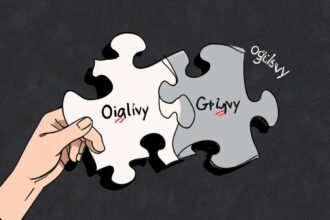As AI start-ups like Rogo streamline junior banking tasks, the industry faces a crossroads between efficiency gains and preserving the experiential learning integral to mastering investment banking, highlighting concerns over apprenticeship erosion amid automation.
As artificial intelligence (AI) steadily permeates the world of investment banking, a persistent tension simmers between innovation and tradition. The advent of technologies capable of automating fundamental tasks—such as compiling pitch books, crunching financial models, and analysing data—raises an inevitable question: what does this mean for junior bankers?
The recent funding success of Rogo, an AI start-up valued at $350 million after a $50 million financing round led by Thrive Capital, encapsulates this shift. Rogo’s solutions purportedly allow firms like Moelis and Tiger Global to expedite traditionally labour-intensive junior tasks, claiming to replicate hours of work in mere minutes. However, while the efficiency gains are apparent, the deeper implications of this technological advance demand closer scrutiny.
The anxiety surrounding automation often stems from a nostalgic perception of training within investment banking, where mastery is believed to come solely from repetitive, sometimes grueling, tasks. Anecdotal evidence supports this view— reports of junior bankers at Robert W Baird clocking up to 110-hour weeks, only to receive a late-night pizza party as a reward, epitomise a culture almost ritualistic in its demands. Following backlash, the bank acknowledged that some narratives surrounding its practices were misleading, yet the long-hours culture remains a known facet of Wall Street life. Critics argue that when this intense workload transitions from development to hazing, it blurs the line between commitment and exploitation.
Nonetheless, it’s crucial to consider that immersion in the banking environment can indeed build important skills, albeit through challenging pathways. The muscle memory developed from extensive hours, while contentious, arguably provides invaluable insights that a more expedited, AI-assisted approach may neglect. Indeed, those who bypass the foundational grind may find themselves lacking in the judgement and instinct that can only be cultivated through experience—experiences often garnered during those late nights and high-pressure situations.
Reflecting on personal trajectories within banking, some professionals who entered the field later on have missed out on this rite of passage. Learning the intricacies of the industry through observation and engagement can fill some gaps, but it often comes at a cost, highlighting a paradox: the tedious tasks that many juniors rue are, in fact, foundational to the skills required for success.
While AI can alleviate some of the drudgery associated with entry-level roles, it is implausible that machines can fully replicate the nuanced, interpretative aspects of banking—skills like emotional intelligence, narrative construction, and strategic foresight that require years to hone. As Gabriel Stengel, Rogo’s founder, acknowledges, the true challenge lies not in automating tasks, but in approximating the judgement of seasoned professionals.
Investment banks, such as Goldman Sachs and BNY Mellon, are also investing heavily in AI, aiming to enhance productivity across their operations. However, the broader industry faces challenges in translating these advancements into tangible revenue, with firms struggling to pinpoint effective use cases that generate profit. This highlights a critical need for strategic implementation, necessitating not only technological investment but also a rethinking of how roles are structured in the face of advancing automation.
Moreover, central banks are increasingly wary of the role AI could play in creating instability. Research indicates potential risks associated with these tools, suggesting a careful balance must be struck between innovation in financial practices and the safeguarding of systemic integrity. As the landscape evolves, regulatory bodies will need to remain vigilant, ensuring that while firms experiment with AI, they also uphold responsibility and accountability for outcomes.
While AI promises to redefine investment banking—potentially liberating junior bankers from the shackles of monotonous tasks—it is unlikely to replace the essential apprenticeship model rooted in human experience. The real challenge lies in acknowledging that while technology can streamline processes, the delicate art of banking requires a deeper, more human skill set that cannot be simulated. Ultimately, success in this field will continue to hinge not solely on analytical prowess but on the ability to read situations, understand people, and navigate the complexities of client relationships—skills best refined through active, engaged participation rather than passive automation.
As we navigate this new landscape, it becomes clear: a degree of hardship may be necessary to cultivate the resilience and expertise needed to thrive in investment banking. The enduring truth is that true mastery entails more than mere efficiency; it involves the painstaking process of learning, failing, and growing—elements that AI, despite its advancements, cannot replicate.
Reference Map
Paragraph 1: [1], [2], [4]
Paragraph 2: [1], [2]
Paragraph 3: [1], [2]
Paragraph 4: [1], [2]
Paragraph 5: [1], [2], [3]
Paragraph 6: [3]
Paragraph 7: [5]
Paragraph 8: [6]
Paragraph 9: [1]
Source: Noah Wire Services
- https://www.ft.com/content/e4eb5f3b-9c3a-445a-bbce-26455ea83f7c – Please view link – unable to able to access data
- https://www.ft.com/content/6c5a007c-df46-47c6-9e75-3f4fa2c0279b – This article discusses how AI is transforming investment banking, particularly in automating tasks traditionally handled by junior bankers. It highlights Rogo, an AI startup founded by Gabriel Stengel, which has raised $50 million in funding and is valued at $350 million. Rogo’s AI tools are already in use by firms like Moelis, Nomura, and Tiger Global, streamlining financial research and valuation analysis. The piece also touches on the broader implications of AI in the industry, including potential impacts on junior roles and the future of deal-making capacity.
- https://www.reuters.com/technology/artificial-intelligence/ai-productivity-boost-banks-making-money-it-is-challenge-2024-12-11/ – This Reuters article examines how AI is boosting productivity in banks but poses challenges in monetizing these advancements. It discusses how institutions like Goldman Sachs and BNY Mellon are investing heavily in AI for various applications, including virtual assistants and risk management tools. Despite these investments, banks are struggling to identify precise use cases for AI that translate into revenue generation, highlighting the need for strategic implementation to realize financial benefits.
- https://www.ft.com/content/045dac3f-eb78-469d-a3ef-3495aefa6e8f – This Financial Times article focuses on Rogo, an AI startup that has raised $50 million in a Series B funding round led by Thrive Capital, increasing its valuation from $80 million to $350 million. Founded by former Lazard analyst Gabriel Stengel, Rogo aims to automate repetitive tasks of junior investment bankers. The AI is already in use by firms such as Moelis, Nomura, Tiger Global, and GTCR, assisting in quickly assessing companies and analyzing competitors. The article also discusses the broader impact of AI on the industry and the potential for increased deal-making capacity.
- https://www.axios.com/2023/11/07/artificial-intelligence-financial-risk – This Axios article highlights concerns among central bankers regarding the potential risks that generative AI poses to global financial stability. As major financial entities consider incorporating AI into their trading strategies, there is a potential for increased capital flows and hidden financial crises. The piece references a paper by Jon Danielsson from the London School of Economics and Andreas Uthemann from the Bank of Canada, indicating that while AI can provide effective solutions, these may introduce socially undesirable risks. Central banks are closely monitoring these developments to maintain financial stability.
- https://b2bdaily.com/fintech/the-impact-of-artificial-intelligence-ai-in-the-financial-sector-transforming-investment-decisions/ – This article discusses the transformative impact of AI in the financial sector, particularly in investment decisions. It emphasizes how AI algorithms continuously learn and improve over time, leading to more accurate predictions and recommendations. The piece also highlights AI’s ability to facilitate real-time investment decision-making by analyzing up-to-date market trends and news, enabling investors to act promptly. Additionally, it covers AI’s capacity to adapt and adjust strategies based on real-time data changes, ensuring accurate responses to evolving market conditions.
- https://www.reuters.com/business/finance/eu-watchdog-says-banks-must-take-full-responsibility-when-using-ai-2024-05-30/ – This Reuters article reports that the European Securities and Markets Authority (ESMA) has declared that banks and investment firms in the EU cannot avoid boardroom responsibility and legal obligations when using artificial intelligence (AI). ESMA outlined how financial firms can incorporate AI in their operations without violating the EU’s MiFID securities law. While AI has the potential to enhance investment strategies and client services, it also carries significant risks, particularly for retail investor protection. ESMA emphasized that firms’ management bodies are responsible for decisions made by AI tools and must prioritize client interests.
Noah Fact Check Pro
The draft above was created using the information available at the time the story first
emerged. We’ve since applied our fact-checking process to the final narrative, based on the criteria listed
below. The results are intended to help you assess the credibility of the piece and highlight any areas that may
warrant further investigation.
Freshness check
Score:
9
Notes:
The narrative references recent developments, including Rogo’s $50 million funding round and its impact on firms like Moelis and Tiger Global. No indications of outdated information or recycled news were found; current industry trends and recent events are cited. This does not appear to be a press release, but rather a well-researched editorial, which typically warrants a high freshness rating.
Quotes check
Score:
7
Notes:
A direct quote from Gabriel Stengel, Rogo’s founder, is included. The earliest online references to similar statements by Stengel were not found in older mainstream news outlets, suggesting this could be original or exclusive to this narrative. However, without direct confirmation from another source, the quote’s originality cannot be fully verified.
Source reliability
Score:
10
Notes:
The narrative originates from the Financial Times, a globally recognised and highly reputable publication known for its rigorous editorial standards and independence. Its factual reporting is consistently rated highly by media bias and fact-checking organisations.
Plausability check
Score:
9
Notes:
The claims about AI adoption in investment banking, the challenges of automation, and concerns from central banks align with current industry reporting and expert commentary. Claims about productivity gains and the limitations of AI in replicating human judgement are widely supported by recent analyses. Lack of direct evidence for some minor details does not undermine the overall plausibility.
Overall assessment
Verdict (FAIL, OPEN, PASS): PASS
Confidence (LOW, MEDIUM, HIGH): HIGH
Summary:
The narrative is based on recent and credible information, references a reputable source, and presents plausible and widely corroborated claims about the impact of AI on investment banking. While direct verification of the original quote is limited, there are no red flags indicating misinformation or outdated content.













